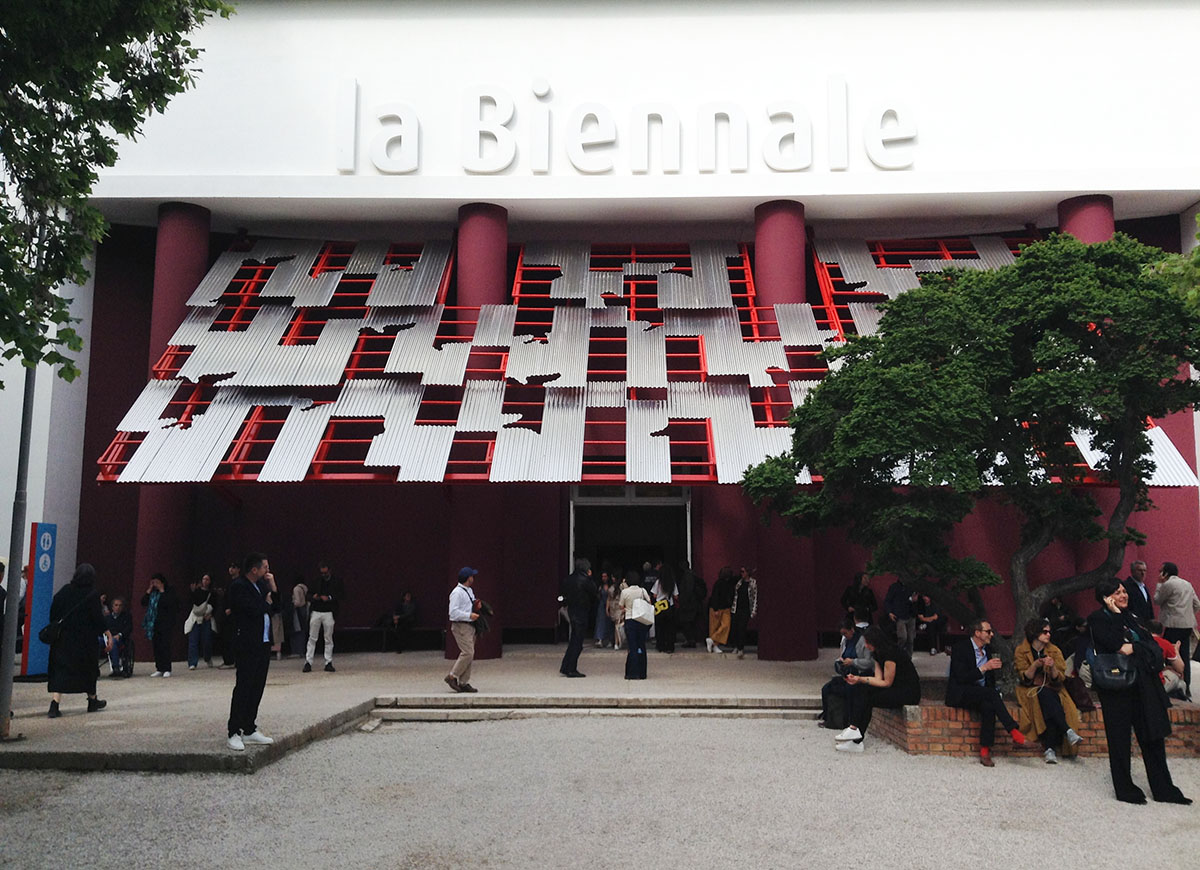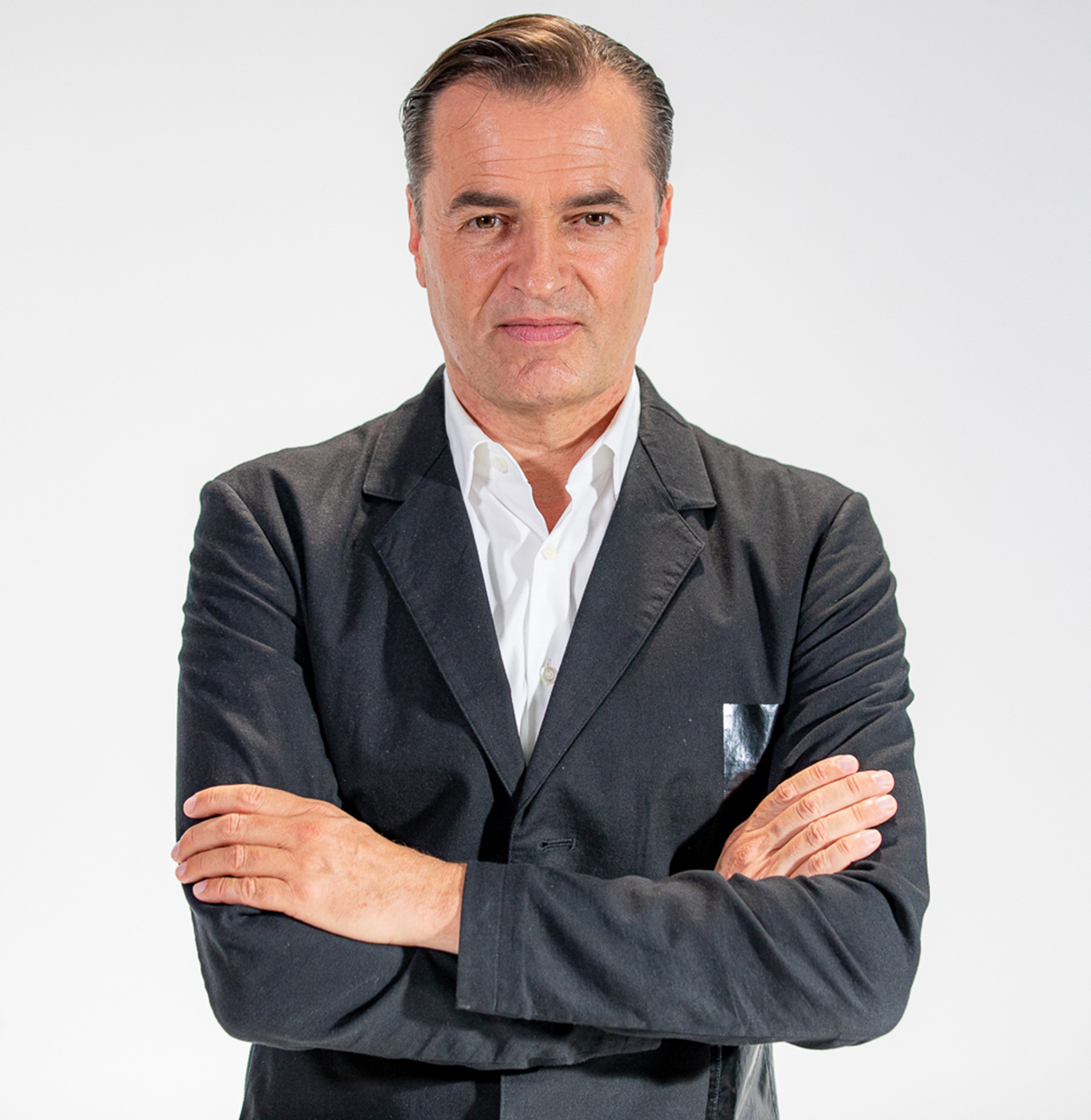Submitted by WA Contents
Patrik Schumacher: "Where is architecture at Venice Architecture Biennale?"
Italy Architecture News - May 25, 2023 - 10:52 4324 views

Zaha Hadid Architects principal Patrik Schumacher has harshly criticized this year's Venice Architecture Biennale for not "showing any architecture" at its exhibitions and pavilions.
According to Schumacher, the Venice Architecture Biennale has been losing its "stellar and unrivalled" position as a global architectural event and it is "consuming its built up reputation" that it has built for many years.
"The event that does not show any architecture"
In a Facebook post, titled Venice Biennale Blues, the architect wrote that "the Venice "Architecture" Biennale is mislabelled and should stop laying claim to the title of architecture."
"This title is just generating confusion and disappointment with respect to an event that does not show any architecture."
Schumacher described the event as "the discursive self-annihilation of the discipline".
He claimed that "most of national pavilions like Germany, France, Spain, United Kingdom, Belgium, Holland, Norway/Sweden, Finland, alongside Japan, Canada, Australia and the USA, refuse to show the work of their architects, or any architecture whatsoever."
"Assuming Venice to be not only the most important item on our global architectural itinery, but also representative of our discourse in general: What we are witnessing here is the discursive self-annihilation of the discipline," Schumacher continued.
"I don't know about other national pavilions. I gave up after seeing no architecture in 12 out of 12 pavilions," he wrote.
"What does this tell us? That there is no noteworthy architecture in Germany, France etc. etc .etc. or anywhere in the Western world?," he asked.
"Is the design and construction of buildings only an occasion for bad conscience? Is this bad conscience the motive force behind the refusal (by now pervasive for more than a decade) to display any contemporary architecture whatsoever?."
Among other pavilions, Schumacher specifically paid attention to the German Pavilion. While he did not see the pavilion as a place to spend more than two seconds, he complained about the absence of German architecture in the biennale for years.
"The German pavilion is filled with piles of construction material. There is no point to spend more than two seconds in there. A single glance and you get the one-liner message (because this message had been reiterated for years): The moral (if not practical/economic) imperative of material recycling," said Patrik Schumacher, the principal of Zaha Hadid Architects.

Patrik Schumacher. Image courtesy of ZHA
"There always seems to be something more important and urgent than architecture"
"There was also a very similar one-liner message filling the space (and consuming the budget) a few years ago: don't build, re-use/renovate. In between the pavilion was filled with documentation of current affairs issues like the refugee crisis."
"There always seems to be something more important and urgent than architecture. The obvious question why we should look at documentations of the refugee crisis when coming to Venice for the Biennale after we have been hearing about the refugee crisis on television every day for months was apparently never asked."
"German architecture has been absent in Venice for years. the same applies to British architecture. Why the architects of these countries put up with this seems puzzling," Schumacher continued.
"Are they too shamefaced about their work to raise their heads above the parapet? In the case of the German pavilion the current emphatic absence of architecture has been explicitly endorsed by the president of the German chamber of architects today in a conversation in front of the German pavilion filled with the rubble of the previous Biennale."
At the same time, questioning the goal and framework of the curators, Schumacher also asked what the curators should expect "the unsuspecting public" who comes to visit the biennale to understand from the biennale.
"What are all these curators expecting the unsuspecting general public who come to visit an architecture Biennale to make of this?," he asked.
The architect argued that "only the Chinese Pavilion shows architecture, plenty of architecture", including the works of Chinese architects like Neru&Hu, Standard Architecture. The architect described the Chinese Pavilion as "an impressive suite of projects."
Schumacher also pointed out the works of Adjaye Associates as another "fantastic exception", while he described Adjaye's show as "the suite of equally impressive projects by Adjaye Associates."
"Architects want to talk about (and see) architecture"
"Everybody else invited has been playing along with using exhibition space for documentary-style intellectual-artistic allusions to moral issues, garnished with pretentious critical-speak, of course without ever taking the risk of really taking up an explicit position or offering constructive proposal," he wrote.
"Whats the point of all this?," he asked. "Is it meant to inspire conversations?."
"Architects want to talk about (and see) architecture," according to Schumacher. "They won't talk about decolonising xyz. Perhaps architectural educators talk about such matters."
"Perhaps thats why architectural design has disappeared from most (especially the most prestigious) schools of architecture."
"The notable exception are Adjaye's projects"
"This show is meant to be at least to 50% featuring architects (at least originally) from Africa. Without David Adaye's work - which I would suspect is the only display at this Biennale that would fill a visitor from Africa with pride - there would be no African architecture in the show," he continued.
"I did not find Francis Kéré's display." Schumacher emphasized that "perhaps it was a mistake to focus on small studios and educators who don't have work. I was curious about African architects and African architecture but I am no wiser after seeing the show."
"The notable exception are Adjaye's projects," he added.
"I think it is a significant fact and signal of development and aspiration, that such sophisticated world class buildings now exist on the African continent, a fact the importance and impact of which for the continent should not be underestimated."
"Is my conception of architecture as discipline too narrow if I expect to see architectural design in an architecture biennale?," he asked. "I don't think so."
"Architectural works are nowhere to be seen in 99% of the exhibition space"
"Whatever social, political or moral issues we want to address, the way to show their relevance to architecture is via projects that claim to respond to these issues."
"No talk about "architecture as expanded field" can convince me that we are still in an architectural event when the scene is dominated by documentaries, critical art practice and symbolic installations while architectural works are nowhere to be seen in 99% of the exhibition space," the architect continued.
According to Schumacher, it has become a safe path to fit social and current issues into specific themes. This is already expected and inevitable, said the architect.
"By now the approach of thematising social ills has become the standard, the expected, unassailable, safe option. Its also easy to organise and cost effective," he wrote.
"Instead of the risky and difficult task to select, explain the selection, and deal with 25 architects, a single artist can be commissioned (or two to three) to interpret the theme, and be left alone to do so. Its all too convenient."
"For the curators of the national pavilions this is the easiest way to discharge the curatorial burden. But its such a lazy and predictable move."
"How long can this continue?," the architect asked.
"The Venice Architecture Biennale, over many years, has built up a stellar, unrivalled position as number one global architectural gathering."
"However, I think the event is now gradually consuming and drawing down its built up reputation. Its consuming its social capital. If the event keeps diluting, even actively avoiding or displacing its mission as architectural event, it becomes vulnerable to new possible contenders if they are delivering what is being expected by the silent majority of architects and I presume by the general public."
"There is nothing in sight here but the vital function the Venice Architecture Biennale used to fulfil for our discipline for many years (and that needs to be fulfilled) is up for grabs," he concluded.
The theme of the 18th Venice Architecture Biennale is The Laboratory of the Future curated by Lesley Lokko.
The Venice Architecture Biennale 2023 is taking place from Saturday 20 May to Sunday 26 November, 2023 at the Arsenale and Giardini venues.
Read more about WAC's coverage about pavilions on Venice Architecture Biennale 2023. To see more pavilions from this year's biennale, you can also visit WAC's Instagram/Reels for exclusive videos.
Top image: Central Pavilion, Giardini. Image © World Architecture Community.
